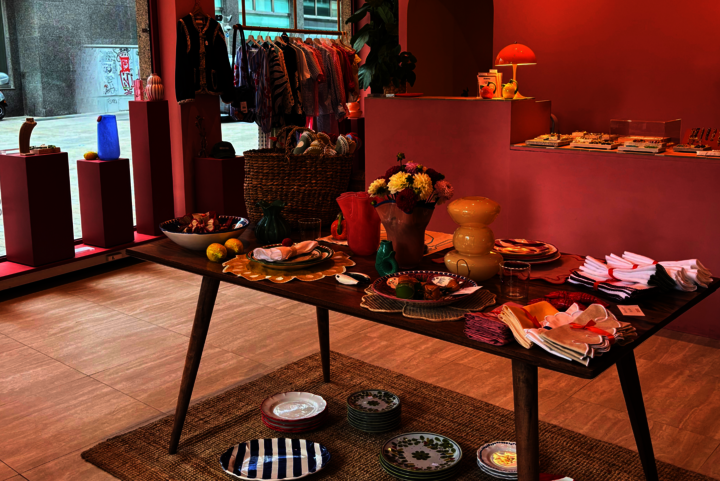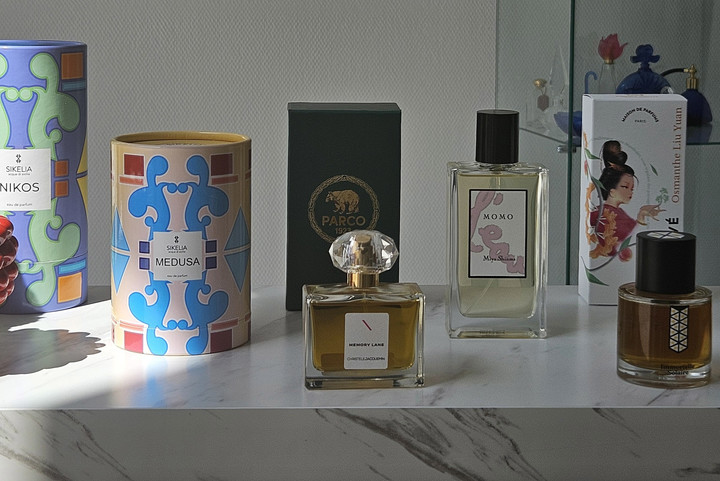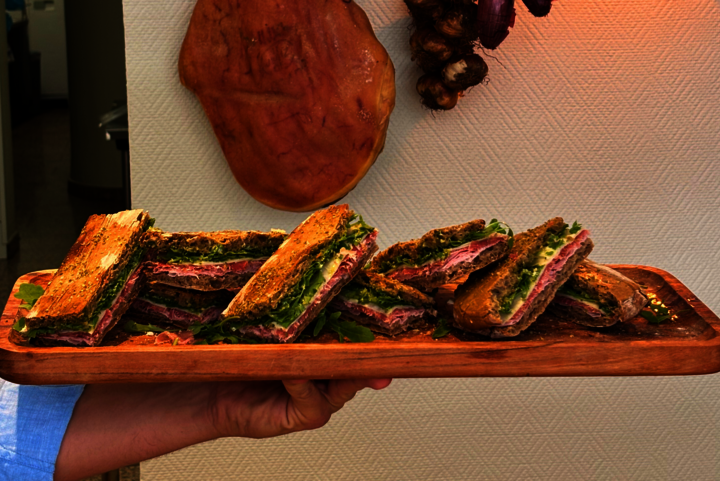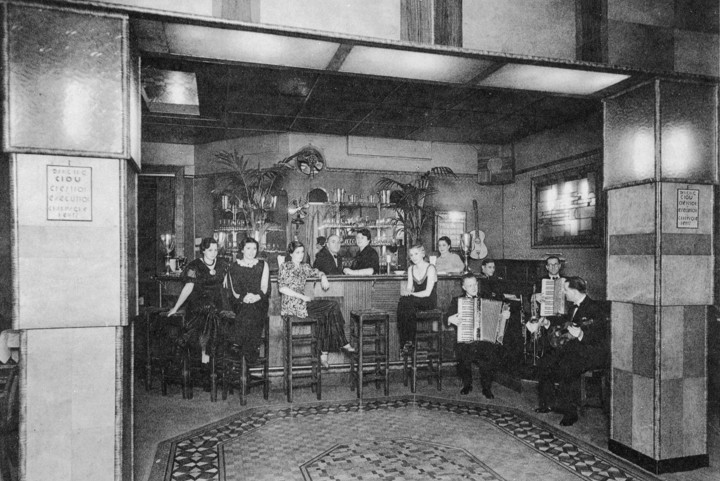(Re)discover our city - Aux mille colonnes
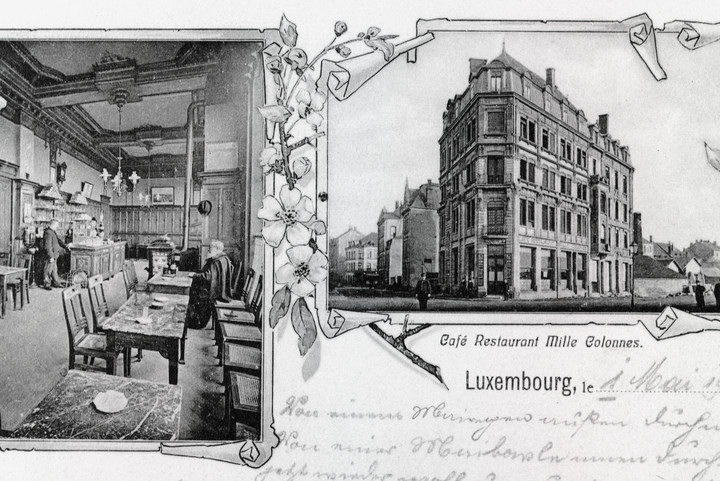
(RE)découvrons notre ville - Aux mille colonnes
Think you know our capital well? Well, let's see about that! Some of the buildings that you walk past on a regular basis have a special story behind them. Dr Robert L. Philippart is a true expert on the subject and will guide you through the city to uncover these hidden stories, making you look at some of our symbolic buildings in a new way.
Aux Mille Colonnes
When the Mille Colonnes café and restaurant opened its doors on the corner of Place de Paris and Rue Jean Origer in November 1904, it found itself in an area which had hardly been urbanised at all.
The Pont Adolphe had been opened in July 1903. The "Charly" railway line only went via Avenue de la Liberté from April 1904. Land in the Bourbon Plateau area only started being significantly developed in 1910. An office for collecting taxes on the entry and exit of goods in and out of Luxembourg City was situated at Place de Paris. The Mille Colonnes restaurant was built on land in the Hollerich municipality, while their neighbours opposite were citizens of Luxembourg City.
The prestigious building which housed the Mille Colonnes café and restaurant (today the Banque Internationale à Luxembourg, Place de Paris banking agency) was one of the first projects to be completed along Avenue de la Liberté. The architect, Mathias Martin, known for his bold Art Nouveau-style constructions, drew up the plans for it. The chamfered corner and balcony still serves as a visual reference point in the city today. Its construction in pretty much open countryside confirmed the owner's conviction that they were investing in a site that would become central to the city.
The building's owner rented out the ground-floor premises to J. Kass-Welter, a former head waiter, who ran the cafe and restaurant until 1907, which used to be known as the "Aux Mille Colonnes" restaurant. The establishment was then taken over by Eugène Neu. Taking the name from the famous café and cabaret on Rue de la Gaité in Paris, as well as the restaurant at the Brussels-North railway station, already shows an agenda. These two places were popular meeting spots for culture and leisure, as well as for sharing political ideologies.
The managers, J. Kass and then Eugène Neu, produced postcards for tourists highlighting the amenities available. However, customers remained local. As the Grand Duchy was part of the customs union with Germany at the time, Kass and Neu served Franziskaner beer from Munich and "blonde" Fürstenberg. The rooms were furnished with a billiards table, carved panelling and mirrors. Gas lighting was used and the wood-burning stove installed in the middle of the room heated the two adjoining rooms. The table tops were made of marble and paired with Thonet chairs.
Mussels were served on Fridays and Träipen (the Luxembourg variant of black pudding) on Saturdays. People met up for board games, evenings of entertainment with artists from dance nights. Awards ceremonies and stag parties guaranteed a lively atmosphere. The Union Cycliste de Hollerich (the Hollerich cyclist's union), the Hollerich-Bonnevoie fire brigade, the Cercle des Philantropes luxembourgeois (Luxembourgish philanthropic circle), the Motor-Union Luxembourg and the Hollerich-Bonnevoie sports union all elected their chairs here. The fire brigade left the key to their depot here. Eugène Neu was president of Fédération des sociétés cyclistes luxembourgeoises (Luxembourg cyclist societies federation), an association founded in 1917 at the Mille Colonnes restaurant. In addition, notaries would hold their auctions here on a regular basis. The café also served as a public telephone box.
The Mille Colonnes became the P. Schmit pharmacy in 1914. From 1934, the premises welcomed the Café Freylinger-Pierret, followed by the Café Reichling from 1948. In 1968, Luxembourg's first fast-food restaurant, Wimpy Gare, opened its doors, with Pub 13 on the first floor. Wimpy ceased trading in 1983. The building became a banking agency and it and the neighbouring properties underwent significant renovations in 2006.
© Photothèque de la Ville de Luxembourg - Collection Dr Kugener No 116
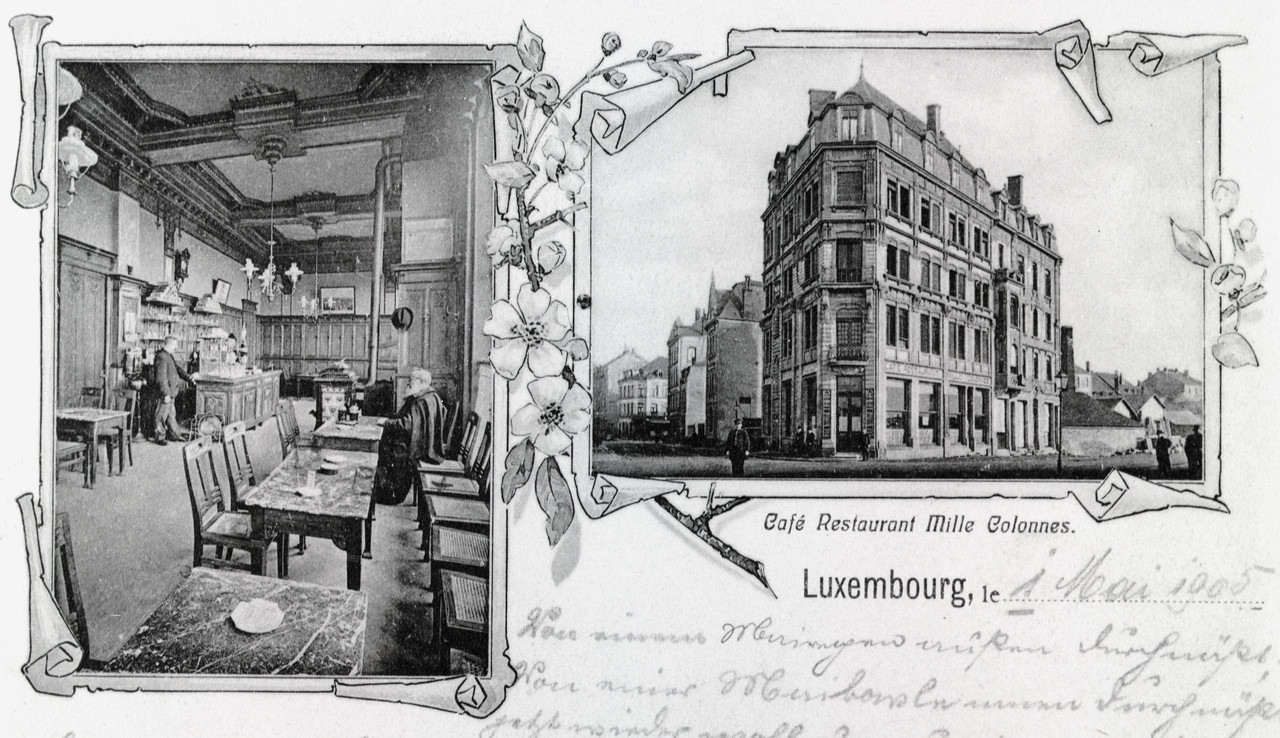
Inscrivez-vous
à la newsletter.
Inscrivez-vous et recevez tous les mois l’actualité shopping de la ville directement par email ! Bon plans, événements phares, nouveaux commerces, ne manquez rien de l’actualité commerçante.
Cityshopping news

